As promised, this post is all about peperomia hope. I get a few questions on my plant whenever I share it on instagram, so thought it would be helpful to detail how I have been caring for my plant. This lovely cultivar is actually a hybrid between Peperomia deppeana + Peperomia quadrifolia. I actually have two of these plants — a larger one I’ve had quite a while now + a smaller one I got as a tiny cutting. I quite like to experiment with plants at different maturities to understand first-hand how they grow, what they like + what they don’t! I’ll share my findings here + hope you find this helpful if you keep peperomia plants too.
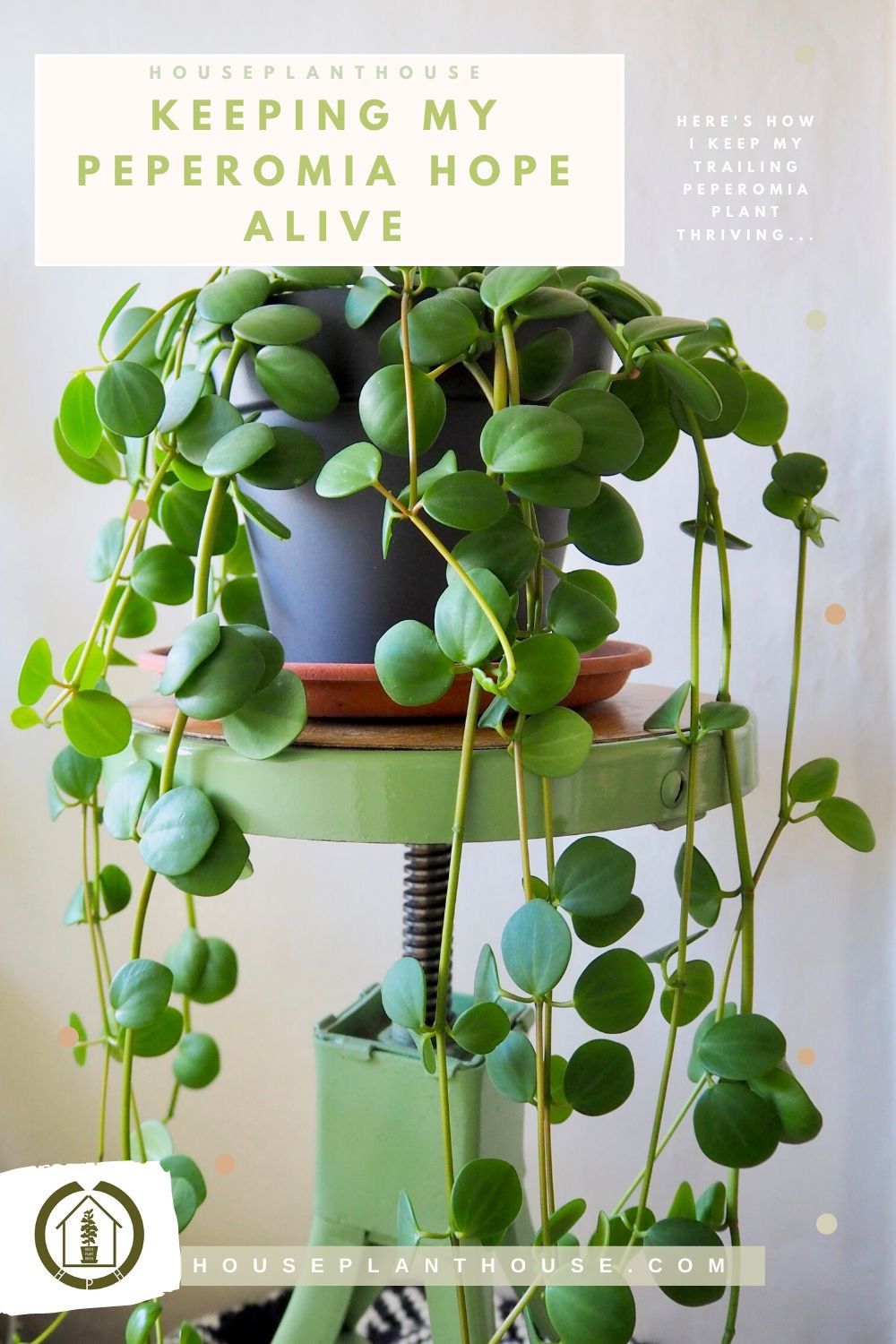
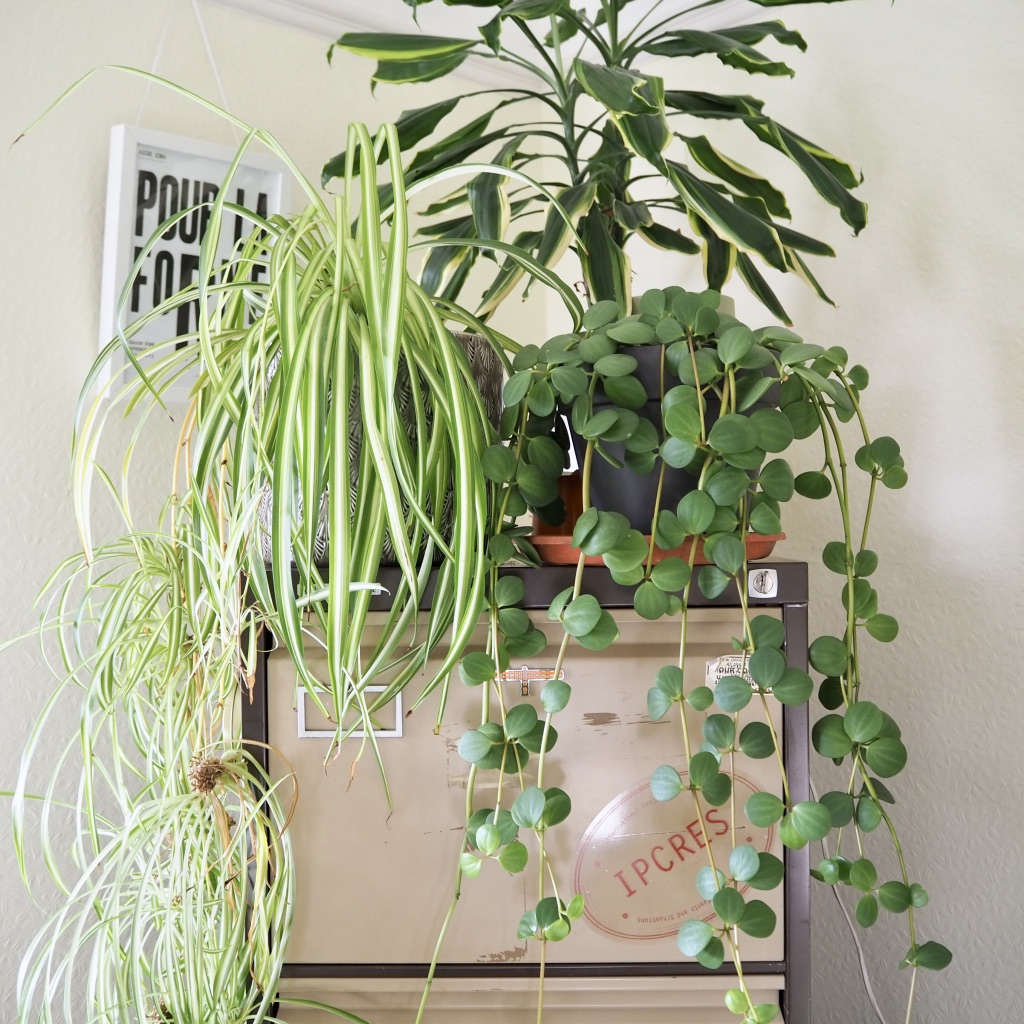
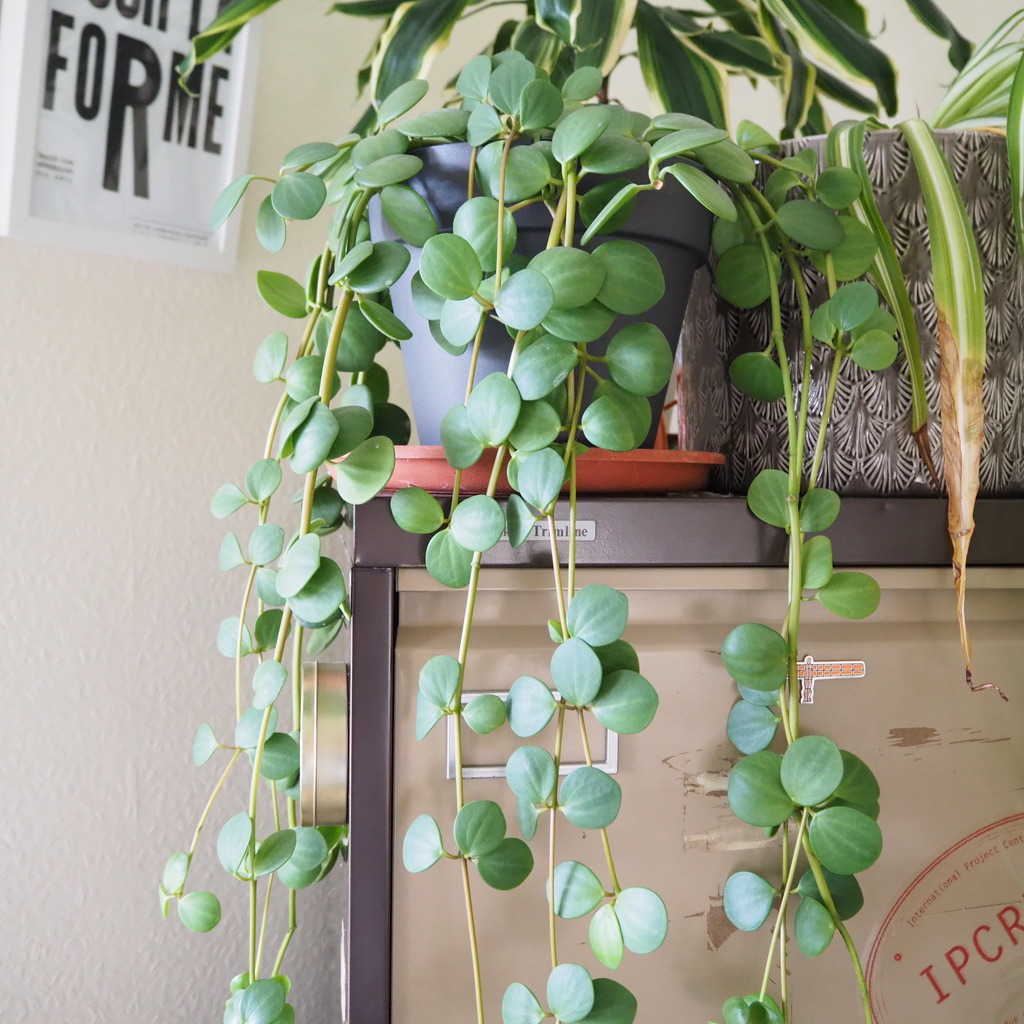
Light
Having two plants is a great way to understand the lighting requirements of a pep hope — I often do this with multiple plants to find the most favourable growing conditions in my home for my plants. I have found through a bit of experimentation that a position close to a south or west facing window is the perfect spot. You don’t want the plant to be in direct light for too long, so around 1 metre away from the window has worked well for me in UK growing conditions. If the plant gets lots of bright light these lovely disc-like leaves can start to look pretty dull + washed-out in appearance so a bright position out of harsh, direct light is ideal. Bear in mind that these are the conditions that are personal to my current environment + are used as a guide for you to compare with your own home. It’s important to also remember that windows can be pretty different in size + if you live in a built up area, with other buildings close by, or if there are obstacles like trees outside, this all has an impact on the intensity of light.
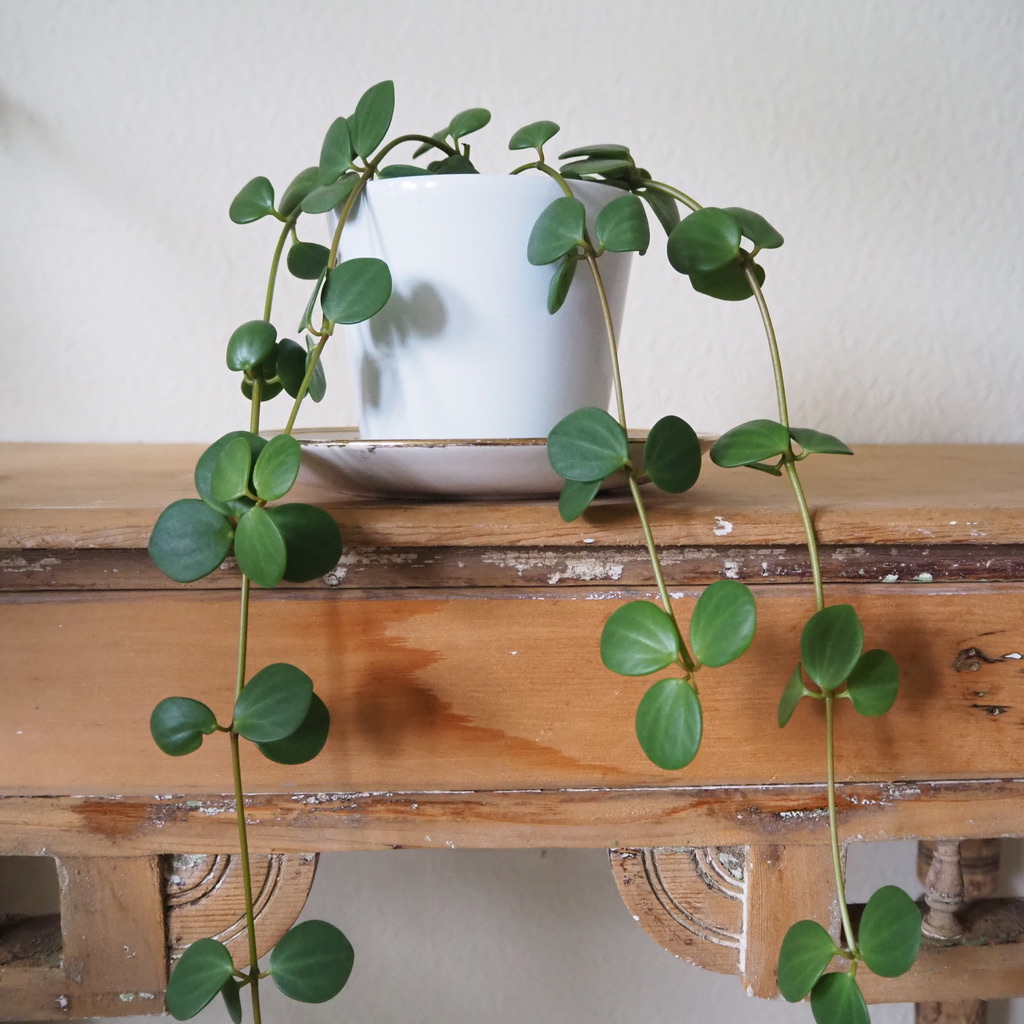
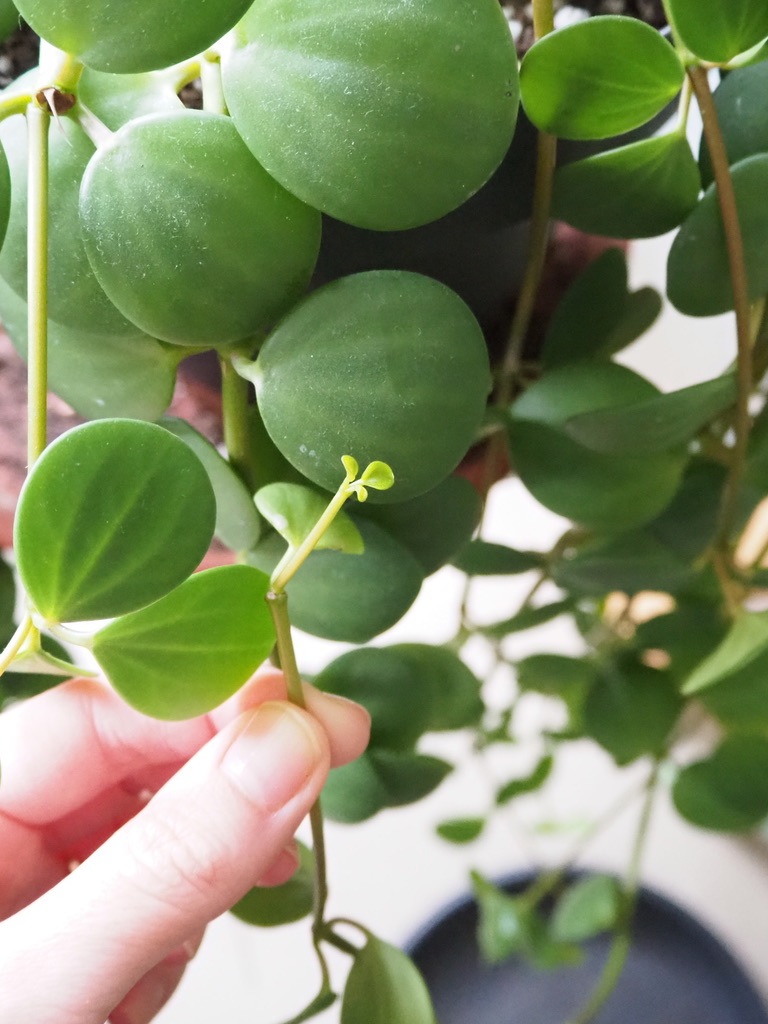

Watering
This is perhaps the most important point of all to get right — too much water is really detrimental to these plants + they will not be happy. Peperomia have quite small root systems in relation to their size + too much water can really affect the overall health of the plant, causing them to drop their leaves or get soggy, soft stems and rotten roots. Not what you want! So water well then leave until the top two inches of potting mix has dried out before watering again. Water at room temperature is good + a shower every once in a while will help keep things dust-free. When watering, be mindful of the leaves that touch the soil — if the plant is very dense you could alternate watering by placing the pot on a water-filled tray + allowing the plant to drink up what it needs, especially in winter. This was my plant getting a drink over the colder months:
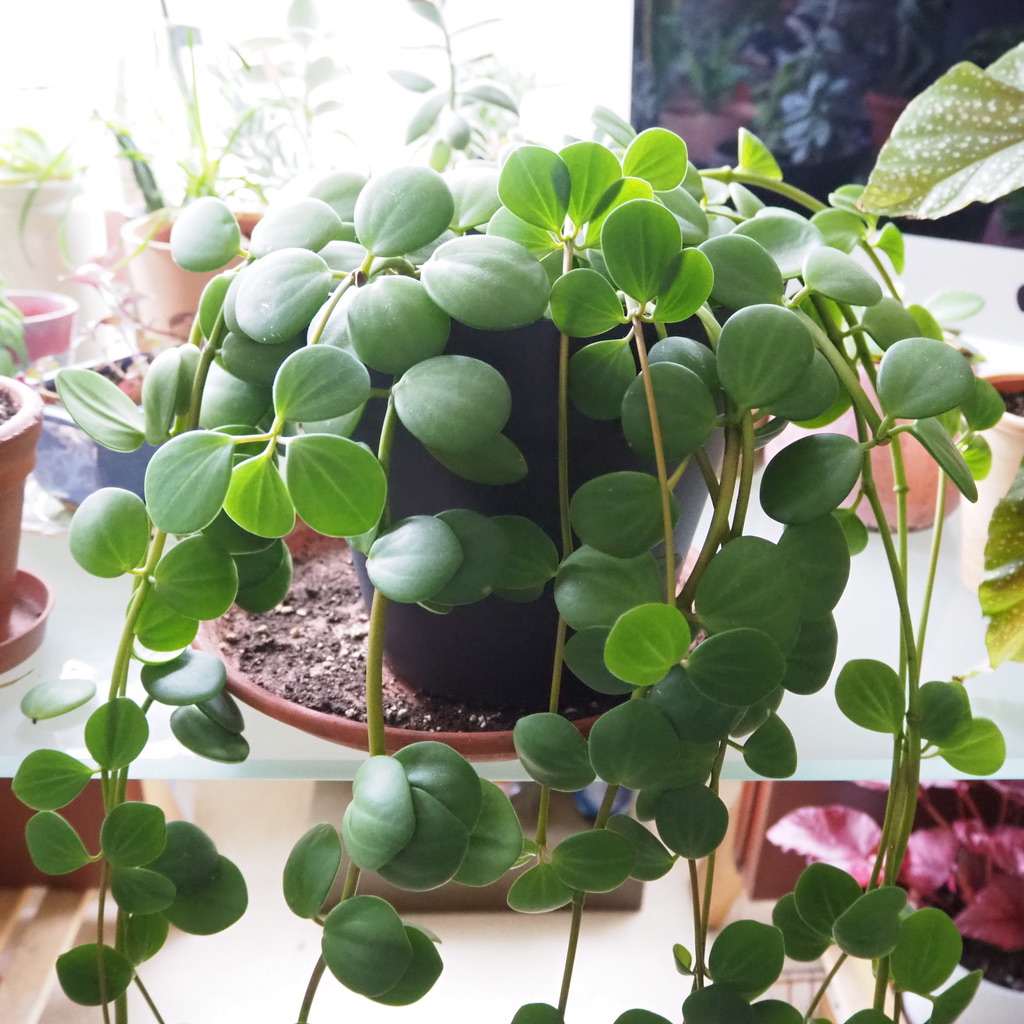
Humidity
This trailing peperomia copes really well in typical household conditions — 40-50% humidity is sufficient. It can handle higher humidity too, just be sure the leaves are not kept wet for prolonged periods or this can lead to rot. My plant is in my living room which averages around 65% humidity + it’s really thriving.
Fertilising
Fertilising can help to keep your peperomia hope strong + healthy — once every two-four weeks is adequate using a balanced houseplant fertiliser at half the recommended dilution rate. It’s not a heavy feeder so don’t worry if you are a bit more relaxed about this! Only fertilise during the growing season, not in autumn or winter if you are in a very cold climate. Saying that, if you find your plants grow year-round, then more regular fertilising is fine. The easiest way to judge whether or not to feed is if your plant is actively growing.
Pests
If you keep your plant correctly watered + fed in average humidity, pests are unlikely to cause you much of a headache with this plant. If your pep is in excessively dry, or hot conditions or has been allowed to dry out too severely, mealy bugs could become something to look out for — white cotton-wool like clusters around the stems, or bugs hiding under the foliage. You can treat this issue with a q-tip soaked in rubbing alcohol, or a insecticidal soap mix. Make sure all the affected area is treated sufficiently + repeat if necessary.
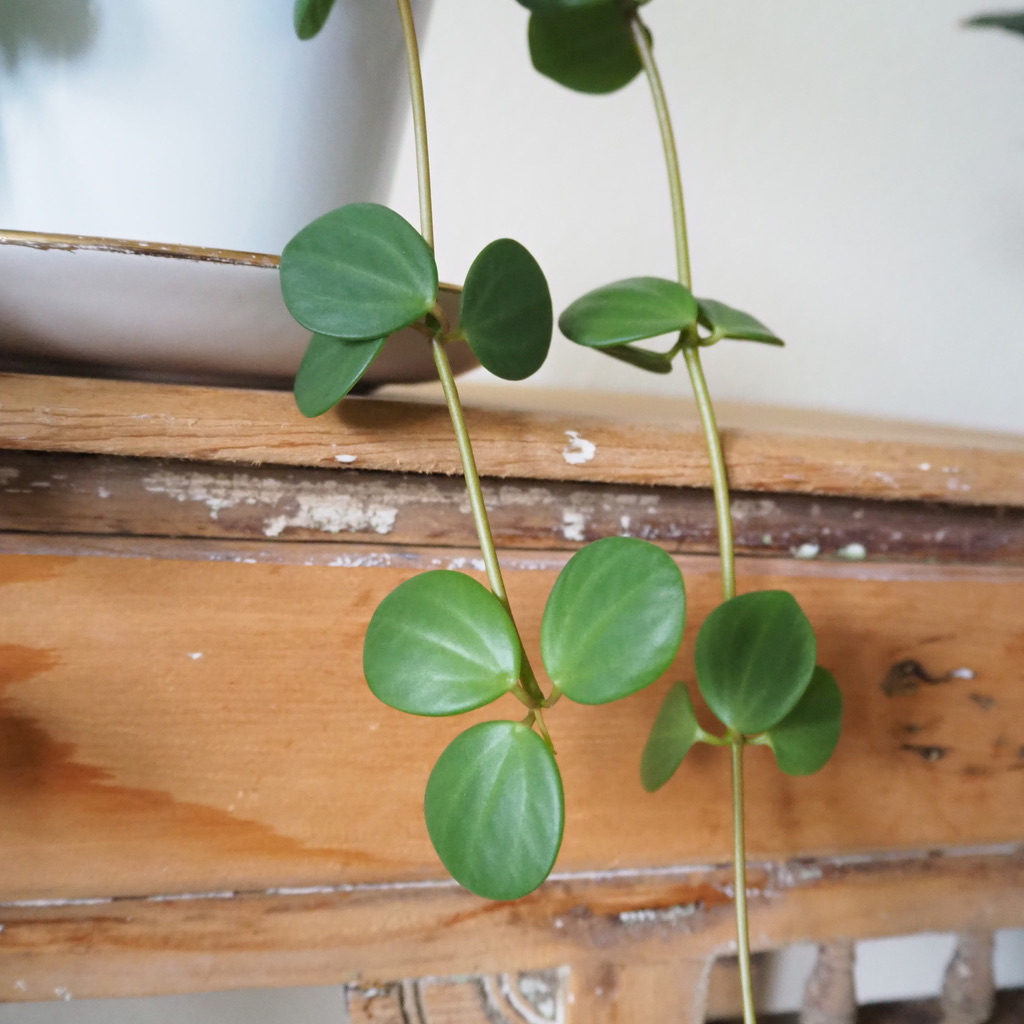
Propagation
If your plant is getting a little leggy, you can take cuttings to propagate — stem cuttings root relatively easily in water; I like to wait a few days after cutting to allow the stem to callus over before putting in water. Leaf cuttings are also possible but I have not tried this myself. In this case, it’s important to ensure the petiole is intact as this is where roots will develop — that’s the little stalk that joins the disc-like leaf to the main stem.
Potting mix
Aside from watering, getting a good quality potting mix for your pep can make all the difference. A well-draining mix will help to keep the roots happy + provide much needed aeration. For my plant I use houseplant potting mix, with some added bark, perlite + horticultural grit mixed in. If your plant is in a mix that is very dense the roots are more likely to come under stress from any adverse treatment such as overwatering. I’ve got a post here with the mix that I like to make up, with links for everything too.
Repotting

Since having both plants nearly two years, I’ve only repotted my larger plant once + the smaller one about three times. With younger plants, a few small jumps in pot size is better than a big leap. Pep’s really only need repotting when the roots are circling the pots. growing out of the drainage holes, or are drying out very quickly.
As you might imagine with their long stems, these aren’t the easiest houseplants to re-pot! The best way I have found to do this is over the end of a table, trailing the stems down so that they don’t get knocked. Prepare your new pot on the table with a few inches of fresh potting mix at the base. Lift your peperomia out of the pot, loosening the roots + shaking off any old potting mix. Then move the old pot away, bringing the new prepped pot underneath the plant. Position + push into the pot, making sure to not damage the stems when doing so. Fill in the gaps around the sides of the pot until full. As it’s best to only go up one pot size at a time, this should not be problematic.

I hope this post helped + thanks for those that asked for it over on instagram.

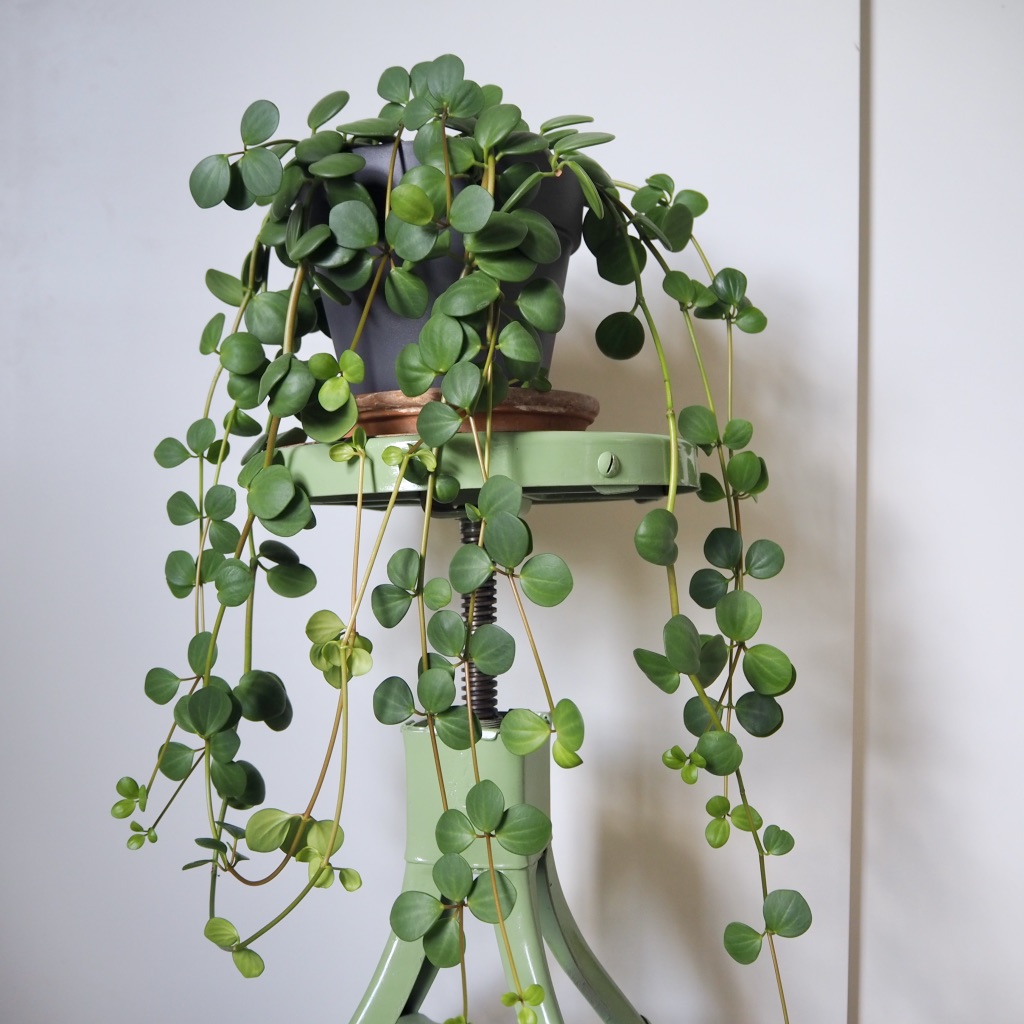
Leave a Reply